How to grow arugula – for a speedy crop of peppery leaves to boost your salad bowl
Everything you need to know about growing and harvesting this fashionable and flavorful salad leaf
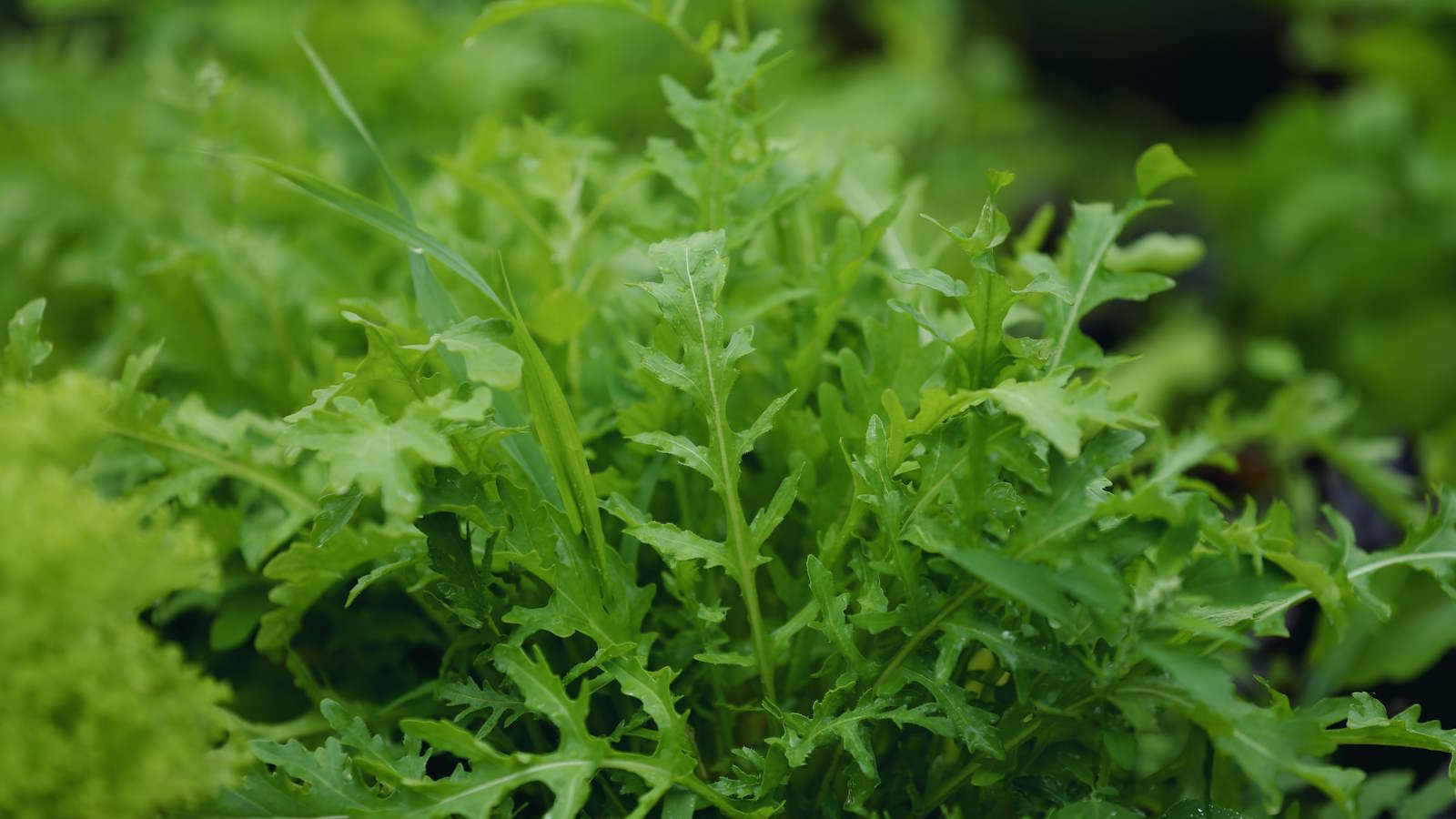

Arugula is a popular spicy salad leaf that is very quick and simple to grow. Also often known as rocket, roquette, or rucola, in other parts of the world, it produces lobed leaves that can be ready to harvest in under a month from sowing.
This fast-growing crop grows low rosettes full of leaves that possess a peppery kick. Happy to grow in the ground, raised beds, or in containers, you can easily get a large and extended arugula harvest for all your culinary needs.
Arugula is a very productive plant that can be sown throughout the year and also potentially harvested year-round. If that sounds appealing to you, then we take a close look at how to grow arugula successfully in your vegetable garden.
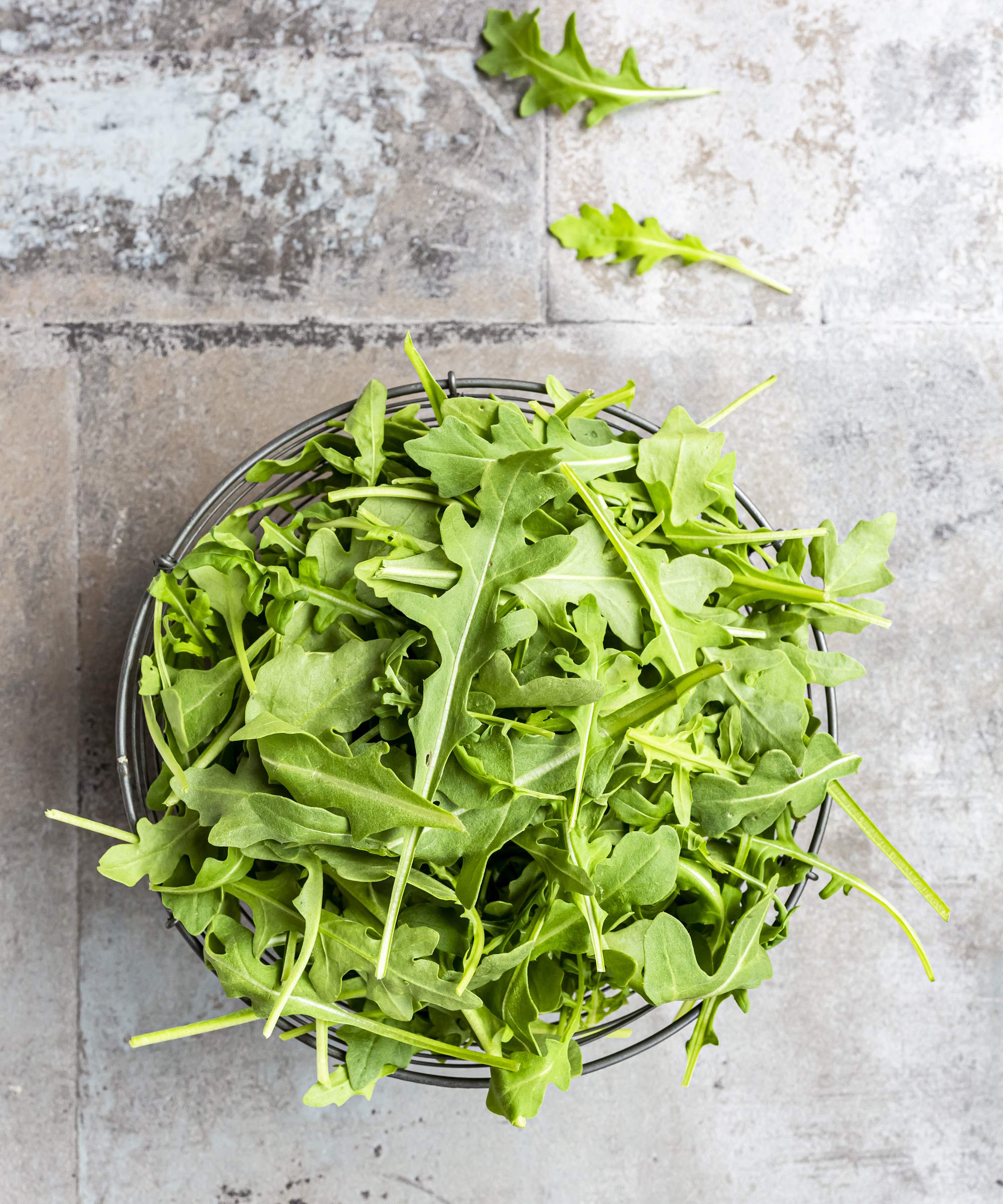
Growing arugula provides big harvests of delicious leaves
How to grow and harvest arugula
Arugula is a fast growing vegetable that is often grown from seed quickly and inexpensively by the majority of growers. Young plants can also be purchased from garden centers or online to plant into your kitchen garden, vegetable garden, or into containers.
How to grow arugula from seed

Arugula is often grown by the seeds being sown directly into the soil
Arugula plants can be speedily grown from seed throughout the year, sowing the seeds directly outdoors from spring to fall. To further extend the season, seeds can be sown in a greenhouse earlier and later in the year to provide harvests of leaves throughout the colder months.
To grow arugula from seed outdoors, wait until the soil is at least 40°F and workable in early spring. To warm up the soil earlier in the year, and give your arugula seeds a protected environment to start life in, you may use cloches or horticultural fleece.
You can plant outdoors directly into the ground from March onwards, depending on your US hardiness zone, and you can sow successionally all the way through to early fall. Regular sowings every few weeks are beneficial as arugula plants will run to seed fast in hot summer weather.
Seeds are best sown a quarter-inch deep in drills that are spaced at least five inches apart. Keep the seeds well-watered and they should germinate within a few days. Thin the seedlings to around six inches apart - though do not throw away the thinned seedlings as they can be added to salads or sandwiches.
Earlier sowings of arugula can be made in a greenhouse, polytunnel, or cold frame in mid-to-late winter for early spring crops, while late sowings can also be made in such protected locations from early fall onwards for leaves throughout late fall and winter.
Arugula can be started indoors in late winter in colder climates, to transplant seedlings into the garden once the soil warms up. Sow the seeds thinly in modules or small pots filled with potting soil and keep moist. They will germinate quickly if grown in a greenhouse or on a sunny windowsill and the arugula seedlings can be planted once the risk of frost has passed, after a period of hardening off.
You can discover the range of arugula seeds available at Burpee
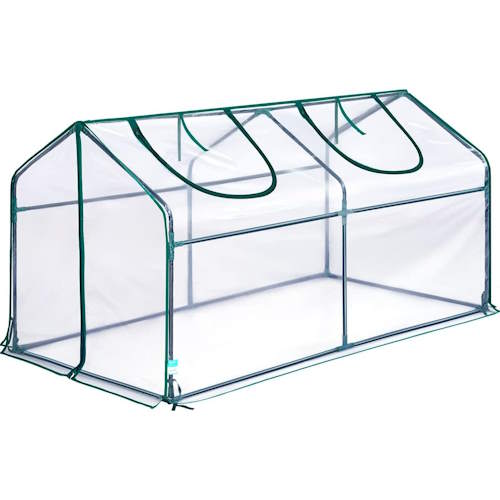
A garden cloche with a size of 71x36x36-inch. Featuring steel framework, and a transparent PVC cover, it can warm the soil and provide a protected space to germinate seeds outdoors.
Where to plant arugula
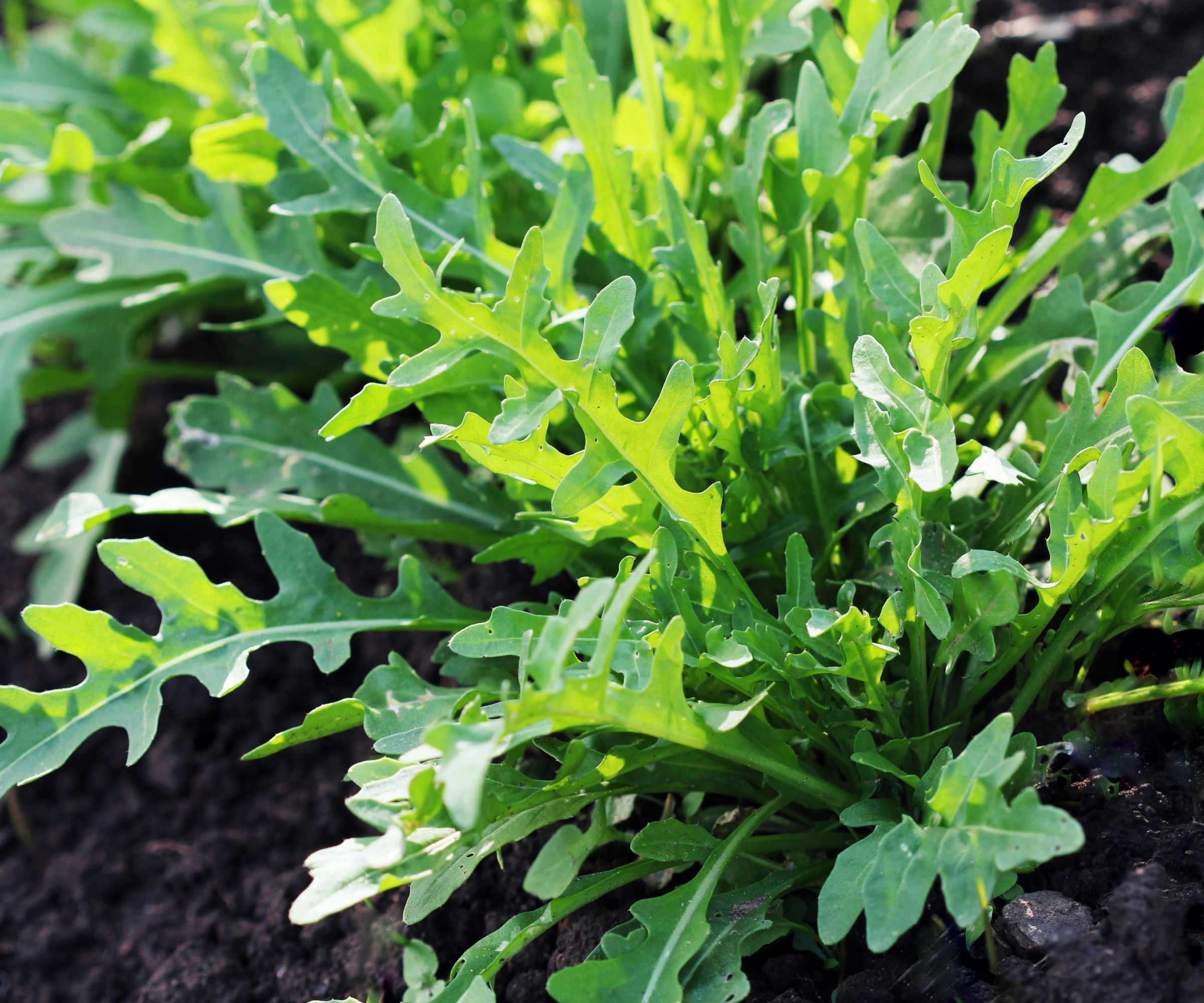
Arugula can grow in a many different soils and locations
Arugula is a very versatile crop to grow. As well as thriving outdoors and indoors - being a fantastic food to grow in a greenhouse and one of the best vegetables for a greenhouse in fall - it can be grown in a variety of set-ups. The crop grows happily in the ground or in raised beds, and it is a fantastic vegetable to grow in pots on a patio, deck, or balcony. Give it the conditions it thrives in and it will grow anywhere - and grow quickly.
The crop is very tolerant of moist soils, but ideally would prefer a soil type that is rich and well-draining. It does prefer a slightly acidic soil with a pH of 6-7, so getting a soil test to test the pH of the soil is recommended to see if any amendments are needed - you can get a simple soil test kit on Amazon.
Arugula does like a sunny spot with at least six hours of direct sunlight. In the summer the plants do have a tendency to bolt in hot weather, so a slightly shady spot is preferred during the warmer months. Arugula is a vegetable that can grow in shade, and it is good to take advantage of that to stop plants bolting and thus extending the harvest you get from plants.
How to care for arugula
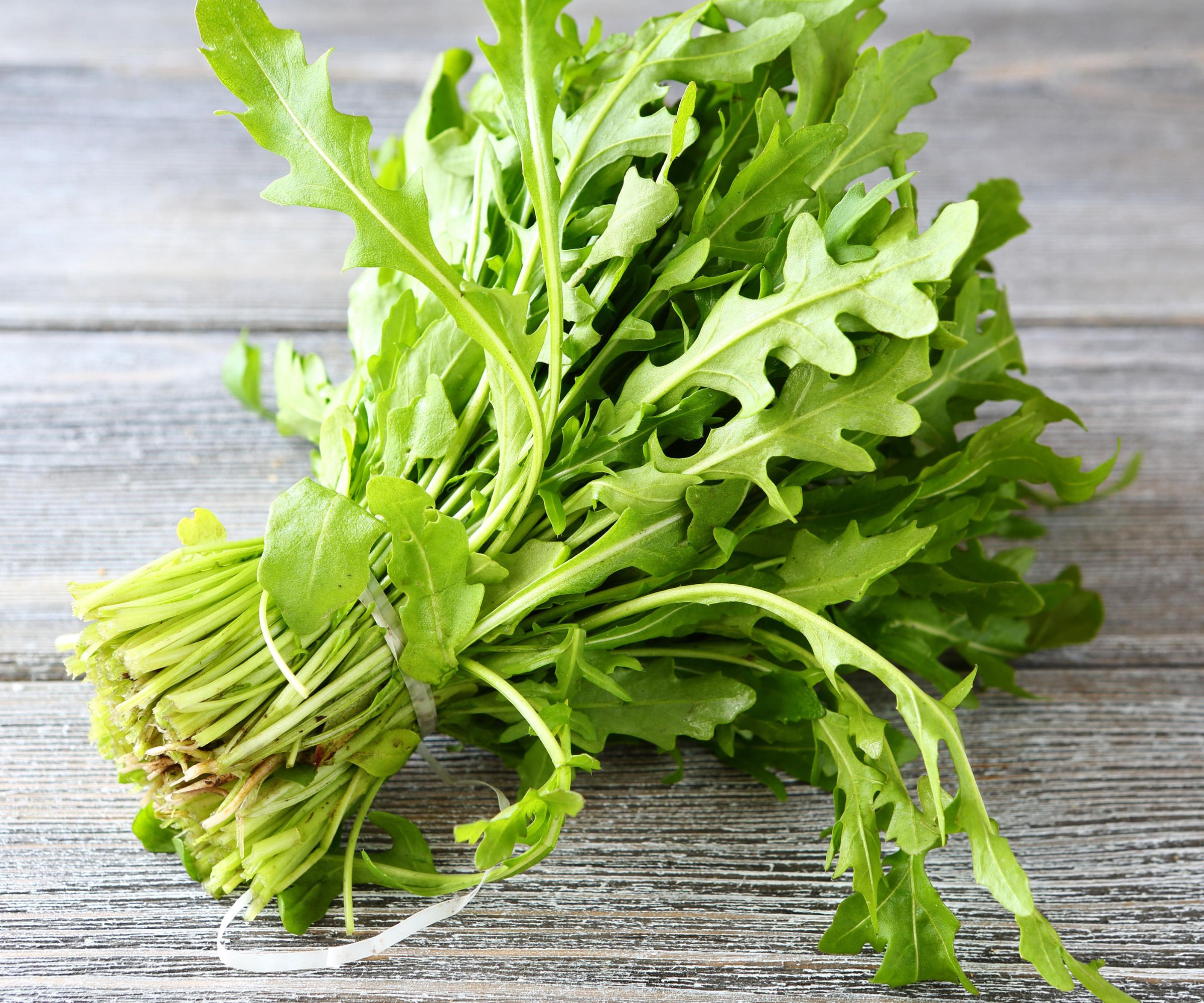
Regularly crop leaves when growing arugula
Keep the soil consistently moist when growing arugula. Pay close attention to when to water plants - especially in warmer weather where bolting is a possibility. It is important to keep the soil moist during the summer as arugula has a shallow root system and can quickly start to wilt from a lack of moisture. When the plants do bolt and start to form seed, this affects the flavor of the leaves and turns them bitter.
Arugula are unlikely to need additional fertilizer during the growing season. Providing they are growing in fertile soil, that should be sufficient to sustain them. Adding organic matter, such as compost or well-rotted manure, prior to planting will enrich the soil the plants are growing in. Alternatively a feed with a general balanced fertilizer at the time of planting - such as with Miracle-Gro Shake 'N Feed available at Amazon - will provide all the nutrients required for the growing season.
Keep the plants free of competition from weeds that take vital moisture and nutrients away from the arugula. Flea beetles can cause issues and nibble holes in leaves. To alleviate this risk, cover the plants with row covers or use companion planting to deter flea beetles, with the likes of marigolds, dill, or thyme, being great beneficial companion plants for arugula. Slugs and snails can be attracted to and eat arugula seedlings, so consider using barriers, trap plants, or beer traps as potential ways to get rid of slugs.
Arugula leaves are ready to harvest once they are large enough to use, usually from two inches in length. This can mean starting to harvest arugula within four weeks of sowing the seeds. The best method of how to harvest arugula is to remove the outer leaves individually and the rest of the plant will continue growing. The alternative is to cut the whole top of the plant around an inch from the ground and a new flush of leaves should be produced from the crown.
How to grow arugula in containers
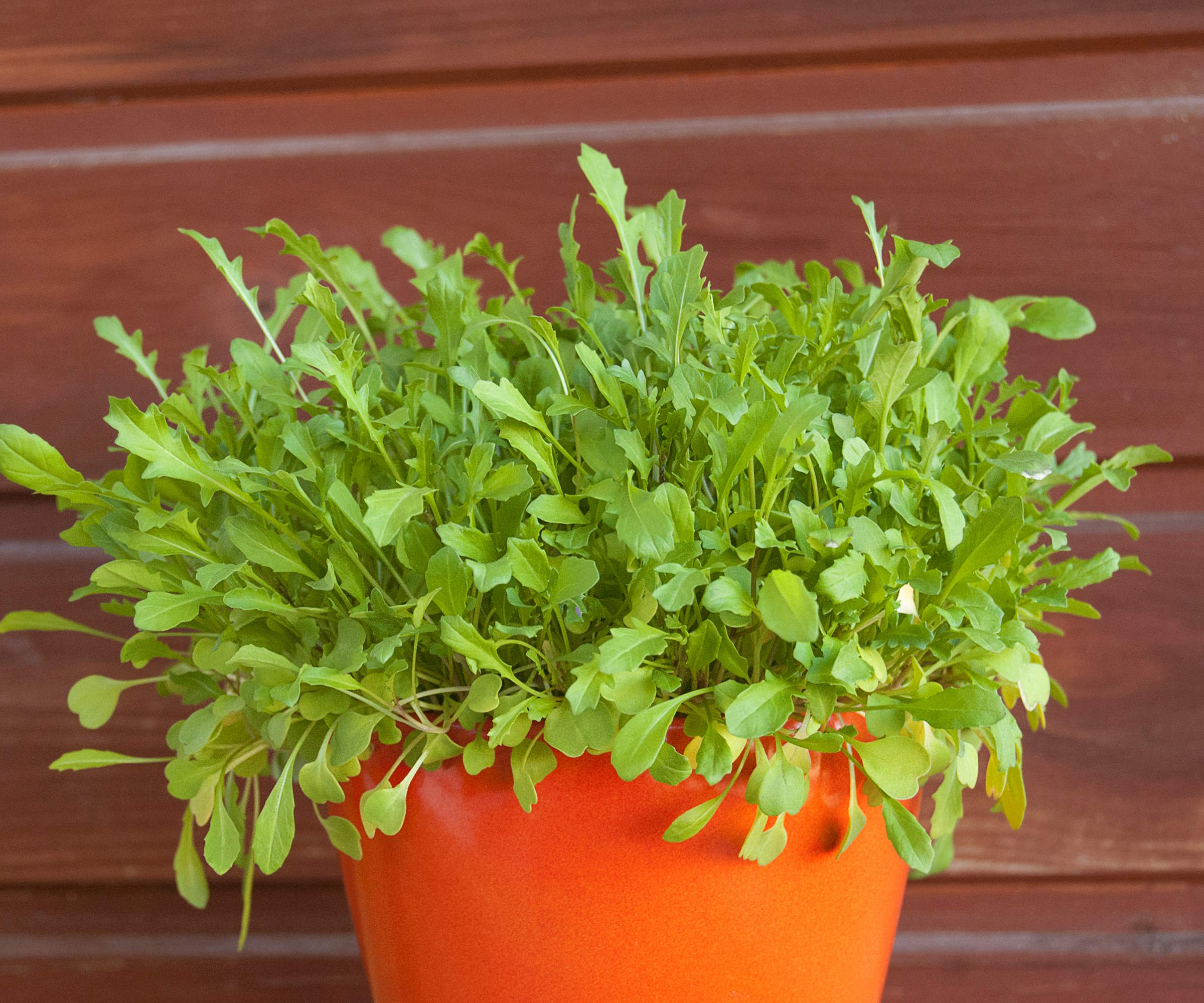
You can enjoy lots of harvests from arugula growing in pots
Arugula is a great crop to grow in a vegetable container garden. As the plant only has shallow roots, it means that a deep pot is not required. Pick a container that has a 10-12 inch diameter and holes in the bottom for drainage. Fill your chosen container with a good quality potting mix. You can either direct sow arugula seeds thinly into the soil, or plant seedlings you purchased or grew indoors.
Place your container in a sunny spot in the garden. One advantage of growing arugula in pots is that you can move the container to a shadier location to prevent bolting in summer. Pay close attention to watering plants in containers, as the soil can quickly dry out in the warmer months. It will also be beneficial to regularly feed crops in pots, such as with a water-soluble balanced fertilizer every two weeks during the growing season. A good example of such a feed would be this organic liquid plant food, available at Amazon.
FAQs
How long does it take for arugula to grow?
Arugula grows very quickly and it can take between four and seven weeks to go from sowing the seeds to leaves being large enough to harvest. The exact length of time it takes will depend on when and where the seeds were sown, along with the climatic conditions during the season. The earliest leaves to be harvested as baby leaves can be ready in under 30 days, while it can take closer to 50 days for the leaves to mature to full size.
How tall does arugula grow?
Arugula tends to grow up to 12 inches in height if it is regularly harvested. The plants can grow taller than this, but the largest and oldest leaves will taste very bitter. It is better to regularly harvest the leaves for a continual supply, before the flavor changes.
Is arugula a perennial or annual?
Arugula is an annual quick-growing plant that completes its life cycle in one year. The plants can, however, easily self-sow around the garden. Wild arugula, which is a different species to the commonly-cultivated annual arugula, is a perennial plant but its leaves, which are also edible, do have a milder taste.
Growing rocket is one sure-fire way to add extra flavor to salads throughout the year. There are indeed lots of different types of lettuce to grow at home, while you can also grow mizuna or other oriental leaves, to add a mix of colors, leaf shapes, and flavors to any salad bowl.
Sign up to the Homes & Gardens newsletter
Design expertise in your inbox – from inspiring decorating ideas and beautiful celebrity homes to practical gardening advice and shopping round-ups.

Drew’s passion for gardening started with growing vegetables and salad in raised beds in a small urban terrace garden. He has worked as a professional gardener in historic gardens and specialises in growing vegetables, fruit, herbs, and cut flowers as a kitchen gardener. That passion for growing extends to being an allotmenteer, garden blogger, and producing how-to gardening guides for websites. Drew was shortlisted for the New Talent of the Year award at the 2023 Garden Media Guild Awards.
-
 5 things people with clean upholstery always do – simple, quick and oh-so-effective
5 things people with clean upholstery always do – simple, quick and oh-so-effectiveEnsure your furnishing looks clean year-round with these expert tips
By Seraphina Di Mizzurati Published
-
 7 native perennials to plant in April – for glorious flowering displays to attract bees, butterflies, and hummingbirds
7 native perennials to plant in April – for glorious flowering displays to attract bees, butterflies, and hummingbirdsDiscover some of the best perennials to plant in April to make your garden a hotspot for wildlife
By Drew Swainston Published